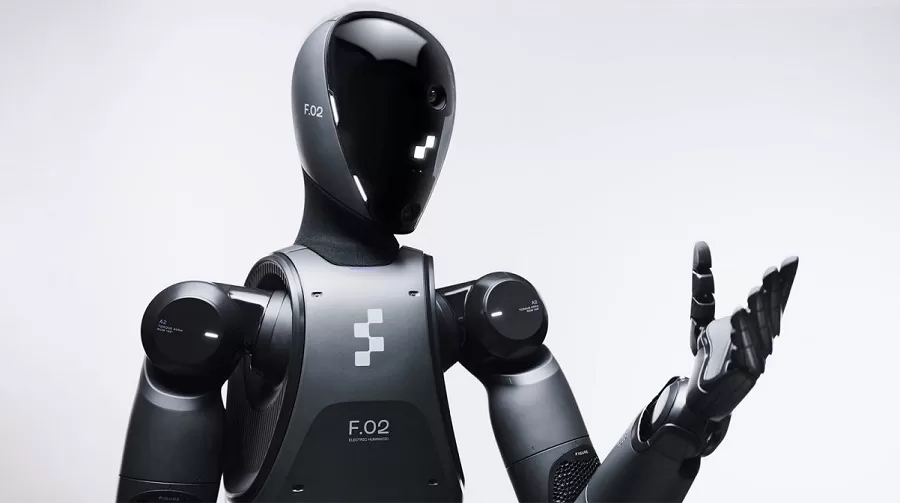Auto
How BMW’s Humanoid Robot is Leading the Charge in Automated Production

- The Figure 02 humanoid robot has revolutionised BMW’s manufacturing process, boosting efficiency by 400%.
- Utilising AI, Figure 02 enhances industrial operations by improving speed, precision, and flexibility.
- The robot fosters human-machine collaboration, increasing production while reducing physical strain on workers.
Breakthroughs in robotics are advancing at an unprecedented pace, with the Figure 02 humanoid robot standing out as one of the most remarkable examples. Designed specifically for the demands of modern manufacturing, particularly high-speed assembly lines, this robot is revolutionising industries like automotive production. At BMW, the Figure 02 has had a transformative impact, significantly boosting both efficiency and speed on the production lines.
Speeding Up Efficiency: A Game-Changer for BMW
BMW, a leader in automotive innovation, has recently showcased the groundbreaking performance of the Figure 02 humanoid robot at its manufacturing plants. With its advanced capabilities, Figure 02 now operates at four times the speed of its predecessors, dramatically boosting productivity on BMW’s assembly line. This leap in performance allows the robot to execute tasks with exceptional agility, reducing downtime and accelerating vehicle production.
The robot’s remarkable 400% increase in efficiency leads to shorter production cycles, all while maintaining high precision. This upgrade positions the Figure 02 as a crucial asset in a fiercely competitive market, where speed and quality are paramount in manufacturing.
The Power of AI Integration in Manufacturing
One of the standout features of the Figure 02 is its seamless integration of artificial intelligence (AI). By combining advanced machine learning with state-of-the-art robotic technology, it adapts to real-time production requirements, enabling it to perform a wide variety of tasks. From assembling intricate components to handling delicate materials, its AI-driven system ensures that each movement is executed with exceptional precision and speed.
This fusion of AI and robotics marks the dawn of a new era in manufacturing, where machines don’t just follow instructions—they learn and optimise processes on the fly. Figure 02 is a prime example of how AI can create smarter, faster, and more flexible systems, capable of meeting the dynamic demands of high-end production.
Impressing at the BMW Plant
The Figure 02 robot has already made a significant impact at the BMW facility, particularly with its ability to adapt to dynamic tasks in real-time. In industries where maintaining efficiency, especially in high-precision operations, is a challenge, Figure 02’s capability to learn and adjust ensures that production remains smooth and consistent. The seamless integration of AI and robotic flexibility enables the factory to uphold its rigorous quality standards while simultaneously increasing output.
Additionally, the robot’s innovative design and performance have made it a valuable asset in other critical sectors. Its versatility extends beyond automotive assembly, with potential applications ranging from assembling delicate components to replacing tasks traditionally performed by human workers.
Promoting Human-Robot Collaboration
While Figure 02 excels in speed and precision, it also fosters enhanced human-robot collaboration. With advanced safety features and an intuitive interface, the robot can work seamlessly alongside humans without posing any risk. This creates an environment where both humans and robots can maximise their potential, with workers focusing on tasks that require higher cognitive skills, while the robot handles repetitive or physically demanding jobs.
This shift not only increases productivity but also improves the quality of work for human employees, allowing them to transition from physically taxing tasks to more creative and decision-making roles in the manufacturing process.
The Road Ahead: Automation and Beyond
As robots like Figure 02 become more commonplace in industrial plants, the future of production lines looks poised for greater efficiency, speed, and precision. With continuous advancements in robotics and AI, we can expect even more sophisticated machines capable of tackling complex tasks at faster rates.
BMW’s implementation of Figure 02 marks the beginning of a new era in robotic manufacturing assistance. As AI integration into robotic systems continues to evolve, companies worldwide will benefit from increased productivity, cost reductions, and the creation of new opportunities for skilled workers.
Figure 02: Shaping the Future of Production
The Figure 02 humanoid robot exemplifies the transformative power of robotics and artificial intelligence in shaping the future of industry. With a remarkable fourfold increase in efficiency at BMW’s production line, it showcases the vast potential of automation to revolutionise operations across various sectors. By embracing this advanced technology, manufacturers can continue optimising their processes, pushing the boundaries of productivity, and maintaining a competitive edge in the global marketplace.
The future is rapidly unfolding, and with Figure 02 leading the charge, we are stepping into a new era of smarter, more automated, and more efficient workplaces.


















































